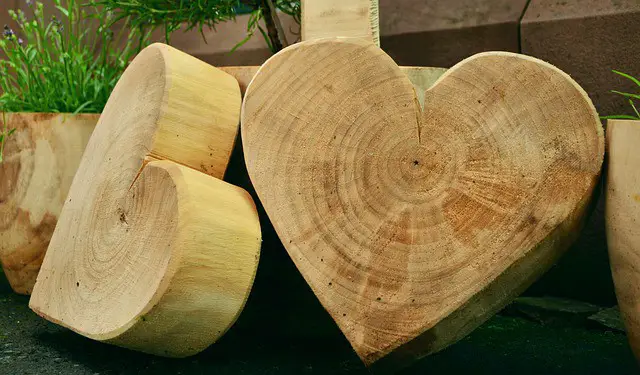As an experienced carpenter and DIY enthusiast, I know that selecting the proper wood species is essential to wood carving success. With so many alternatives, choosing the right wood for your project may be difficult. This article compares numerous timber species and lists their advantages and downsides to help you choose the right wood for your next carving job.

The Most Popular Species of Timber for Wood Carving
There are a great number of species of wood that are appropriate for carving, although certain types of wood are more often used than others. The following is a list of the species of wood that are most often used for carving, along with an explanation of why certain species are so well suited to this craft:
Basswood
Because of its fine, even grain and smooth, velvety feel, basswood is one of the kinds of wood that is carved into objects the most often. This kind of wood is great for novices since it is simple to carve. In addition to this, it is lightweight, making it an excellent option for projects of a greater scale. The fact that basswood is not only simple to work with but also inexpensive and widely accessible also makes it an excellent material for carving, both for amateurs and for professionals.
Butternut
Carvers like working with butternut since it has a fine grain and a creamy yellow hue. Butternut is another kind of softwood that is popular. Because this species is both more robust than basswood and resistant to decay, it is a good option for use in projects that will be carried out in the open air. Because it is so simple to cut and sand, it is an excellent material for those who like woodworking as a hobby.
Cedar
Cedar is a prominent species of softwood that is valued for its distinctively fragrant odor as well as its inherent resistance to insect infestation. Due to the fact that it is durable and resistant to decay, it is an excellent option for use in outdoor projects such as building birdhouses and birdfeeders. The fact that cedar is so simple to work with makes it an excellent material for both amateur and expert woodcarvers alike.
Walnut
Because of its fine, even texture and deep, dark color, walnut is a type of hardwood that lends itself particularly well to carving. Because of its attractive appearance and long-lasting nature, it is often used in the construction of furniture and other ornamental objects. Carving this species is more difficult than carving any of the softwoods that were discussed before, but the end result is well worth the additional work that was required.
Wood Texture
The quality of the carving job is in large part determined by the roughness of the wood. The ultimate appearance of the carving, as well as the ease with which the carver is able to work with the wood, are both influenced to some degree by the texture of the wood. In this piece, we’ll discuss the many ways in which various kinds of wood may be textured, as well as their inherent qualities and the activities that are most suited to each.
Fine-Textured Woods
- Cherry
- Mahogany
- Walnut
Medium-Textured Woods
Fine-textured woods have a grain pattern that is hardly discernible, whereas medium-textured woods have a grain pattern that is easily discernible but still have a smooth texture. Because they may be used for both intricate and rough carving work, these types of woods are often regarded as being the most adaptable for usage in the carving process.
- Cherry
- Mahogany
- Walnut
Coarse-Textured Woods
Woods with a coarse texture tend to have a grain pattern that is very obvious and distinct. As a result, these woods are perfect for rough carving work such as sculpting and relief carving. Because these woods are often less thick and have a softer texture, they are simpler to work with when creating bigger and more sculptural works than fine- and medium-textured woods.
- Pine
- Redwood
- Spruce
Essential Tools for Wood Carving
Wood carving is a complex art form that calls both both talent and the appropriate equipment. Different tools will be required for a successful job depending on the sort of wood you’re working with. We’ll examine the necessary equipment for carving some of the most popular kinds of wood in this part.

Softwoods
Softwoods like pine, spruce, and fir are easy to carve and a good choice for people who are just starting out. But since they are softer than hardwoods, you need a different set of tools to work with them. For carving softwoods, you must have the following tools:
- Chisels: Chisels are the most basic tool for carving and come in various sizes and shapes to fit different needs. You’ll need a set of straight and V-shaped chisels to carve softwoods.
- Gouges are chisels with curved edges that are used to shape and make curves in wood. Softwoods can be carved with a variety of gouges in different sizes.
- Rasps and Files: After the wood has been carved, rasps and files are used to smooth and shape it. They come in different sizes and shapes, and you need them to get a smooth finish on your carving.
Hardwoods
Hardwoods like oak, maple, and cherry are harder to carve, but the finished product is much stronger and lasts longer. Since they are harder than softwoods, you need special tools to carve them well. For carving hardwoods, you must have the following tools:
- Skew chisels are a type of chisel with a curved edge that is used to cut and shape hardwoods. They are necessary for carving hardwoods because their angled edge lets them cut more smoothly and with less force.
- Carving Knives: Carving knives are used to cut in tight spaces and make small cuts. They come in many different sizes and shapes and are needed to make intricate designs in hardwoods.
- Detail Gouges: Detail gouges are similar to regular gouges, but they have a finer edge and are used for more detailed work in hardwoods.
- Power Tools: Rotary tools, angle grinders, and sanders are examples of power tools that can be used to quickly remove large amounts of wood and shape hardwoods. But it’s important to be careful and follow all safety rules when using power tools.
Frequently Asked Questions About the Best Species of Timber for Wood Carving
Q: What kinds of wood work best for wood carving?
A: Butternut, basswood, tupelo, white pine, cedar, and mahogany are some of the best types of wood for carving.
Q : What makes basswood one of the best types of wood for carving?
A: Basswood is thought to be one of the best types of wood for carving because it has a straight grain, a smooth surface, and is light. It is also easy to carve, making it perfect for people who are just starting out.
Q: Why is butternut a good wood to carve with?
A: Because it is smooth and light in color, butternut is a good wood to use for carving. It’s also easy to carve and looks good when it’s done.
Q: What are some of the benefits of carving with tupelo?
A: Tupelo is a good type of wood to use for carving because it is light, strong, and easy to work with. It is also smooth and fine, and it doesn’t break easily.
Q: Why does white pine work well for carving?
A: White pine is a good choice for carving because it is soft, easy to carve, and keeps details well. It is also smooth and light, which makes it perfect for painting or staining.
Q: Why is cedar a good type of wood for carving?
A: Cedar is a good choice for carving because it is light, strong, and has a fine texture. It also has a unique smell and doesn’t naturally rot or decay.
Q: Why is mahogany one of the best types of wood for carving?
A: Mahogany is a popular choice for wood carving because it is strong, lasts a long time, and has a smooth surface. It is also easy to carve and holds details well, which makes it a good choice for designs with lots of small parts.
Q: Can I carve things out of hardwoods?
A: Yes, you can carve oak, maple, or cherry wood, which are all hard woods. But they are usually harder to carve and may take more skill and experience.
Q: Is there any kind of wood that can’t be used for carving?
A: Some types of wood, like knotty pine or elm, may not be good for carving because their grain patterns aren’t even or they tend to split.
Q: Can you carve with wood that has been used before?
A: Yes, you can carve with reclaimed or recycled wood as long as it is in good shape. But you should think about the type of wood and how old it is, as some may be more likely to split or crack.
//// 28-06-2023

